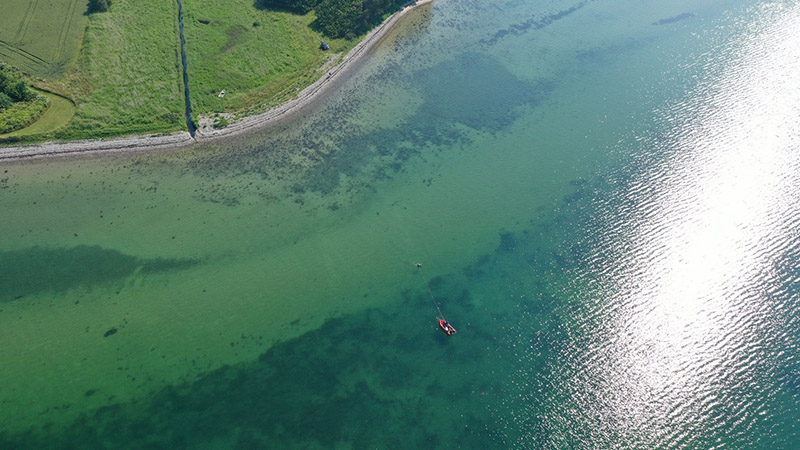
Forty years ago, Langelands Museum excavated part of the Stone Age site Tybrind Vig at the Danish coast. This same museum is now monitoring the unique ancient monument because it risks being impacted by climate change.
“Every year since 2017, we have been measuring whether the settlement is being affected by the forces of the sea. If the sand disappears and no longer covers the finds, they’ll be destroyed,” says Sigurd Bohr, museum inspector at Langelands Museum, who together with colleagues is monitoring developments.
The eelgrass plant plays an important role along the coasts because it holds the seabed sediments together. But eelgrass has declined due to eutrophication of the sea. Climate change is making the weather more capricious and the water warmer. Storms could cause objects from the discovery site to become exposed, and the voracious shipworm would then be able to freely snack on the unique objects.
Archaeologists use two measurement methods to determine potential erosion. They carefully measure the height at a special measuring station, and make another general measurement in the sea bay using sonar.
“What we’re doing at Langelands Museum is method development, too, since the erosion of maritime remains has not been measured before,” he says.
Bohr discussed these methods for measuring erosion with other Nordic archaeologists at a maritime archaeology conference recently in Roskilde, Denmark.
In 1978-1987, parts of the settlement were excavated and archaeologists got a breath-taking trip back in time 7000 years. They found scores of objects, such as food scraps, pottery, fish hooks, fish bones, textiles, canoes and painted paddles – and human skeletons.
These are objects that are not preserved on land and tell us something about the people who lived there by the protected lagoon. They fished and hunted, collected shellfish, seeds and plants, and made utensils, ceramics and fabrics, as well as had boats.
Want to see 7000-year-old objects from Tybrind Vig? Come to the Museum of Wrecks in Stockholm, where you can learn more about it in one of the exhibitions.